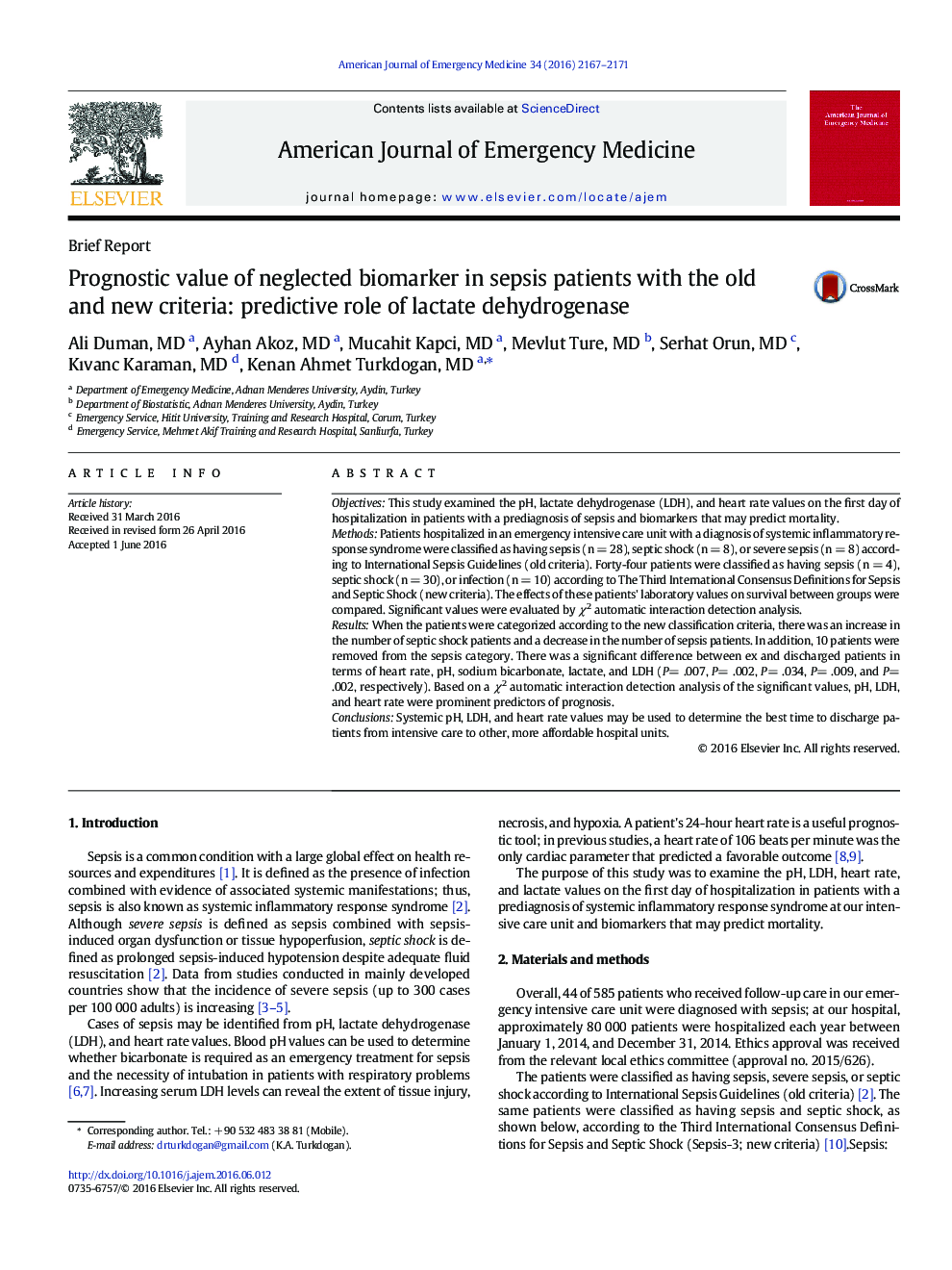| Article ID | Journal | Published Year | Pages | File Type |
|---|---|---|---|---|
| 5650565 | The American Journal of Emergency Medicine | 2016 | 5 Pages |
ObjectivesThis study examined the pH, lactate dehydrogenase (LDH), and heart rate values on the first day of hospitalization in patients with a prediagnosis of sepsis and biomarkers that may predict mortality.MethodsPatients hospitalized in an emergency intensive care unit with a diagnosis of systemic inflammatory response syndrome were classified as having sepsis (n = 28), septic shock (n = 8), or severe sepsis (n = 8) according to International Sepsis Guidelines (old criteria). Forty-four patients were classified as having sepsis (n = 4), septic shock (n = 30), or infection (n = 10) according to The Third International Consensus Definitions for Sepsis and Septic Shock (new criteria). The effects of these patients' laboratory values on survival between groups were compared. Significant values were evaluated by Ï2 automatic interaction detection analysis.ResultsWhen the patients were categorized according to the new classification criteria, there was an increase in the number of septic shock patients and a decrease in the number of sepsis patients. In addition, 10 patients were removed from the sepsis category. There was a significant difference between ex and discharged patients in terms of heart rate, pH, sodium bicarbonate, lactate, and LDH (P= .007, P= .002, P= .034, P= .009, and P= .002, respectively). Based on a Ï2 automatic interaction detection analysis of the significant values, pH, LDH, and heart rate were prominent predictors of prognosis.ConclusionsSystemic pH, LDH, and heart rate values may be used to determine the best time to discharge patients from intensive care to other, more affordable hospital units.
